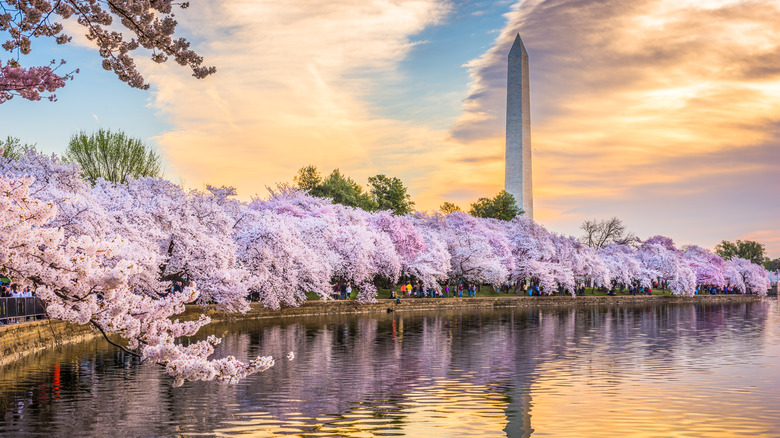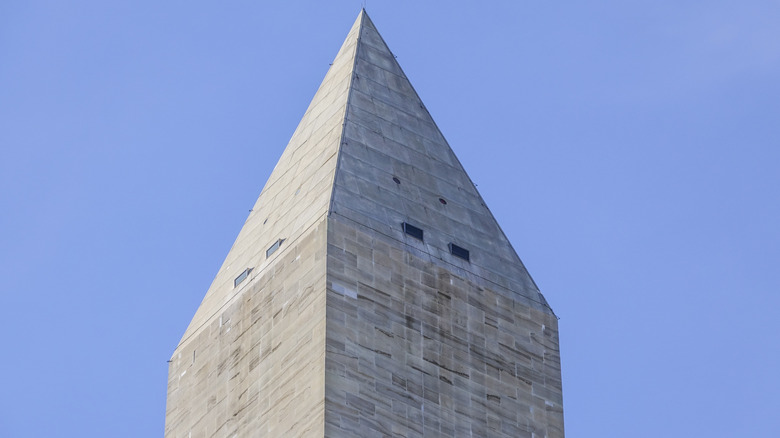The Reason There's A Pyramid On Top Of The Washington Monument
The oddball shape of the Washington Monument has been a topic of great debate since the building's inception. Designed tall and narrow with a pointy triangular top and an exterior boasting two different tones of stone, those with an eagle eye can immediately tell this building has been through some trauma.
After enduring a political coup from a group referred to as the Know-Nothings, who attempted to halt construction indefinitely, the Washington Monument just sort of hung around, half built for several decades (via Mall History). During this time in history, which spanned from the mid 1850s through to 1876, the half-finished obelisk attraction sported a flat, wooden roof that left it vulnerable to all sorts of natural disasters. Eventually, authorities reached the decision that the roof should be constructed in the form of an aluminum pyramid. The purpose of this pyramid was not to give the building a more ornate appearance or to pay homage to ancient Egyptian kings as many have suggested (via Mental Floss).
In reality, the reasoning was much more practical, despite the pyramid's construction being an impracticality in the end.
Shockingly, the pyramid was supposed to protect from lightning
Spoiler alert: it did not work.
According to Mental Floss, the U.S. Army Corps of Engineers, along with one individual architect/aluminum producer by the name of William Frishmuth, are responsible for the infamous monolith. While it might be fanciful to imagine the aluminum-based, pyramid shaped topper as an ornament piercing the D.C. skyline in tribute to President Washington, the truth is it was meant to be a lightning rod.
Due to this unexpected accessory, at the time of its construction, the Washington Monument was not only the tallest building in the world (via National Park Service), but it also featured a top crafted from the largest ever piece of cast aluminum. The work was such a marvel, it was displayed in the Big Apple before meeting its final destination in the capital. Decades of construction and national record beating, however, did not pay off.
Shortly after the pyramid top was fitted upon the Washington Monument, lightning struck the building, causing it to crack and crumble. It is for this reason that the Washington Monument you see today sports copper bars on all sides at its top.

